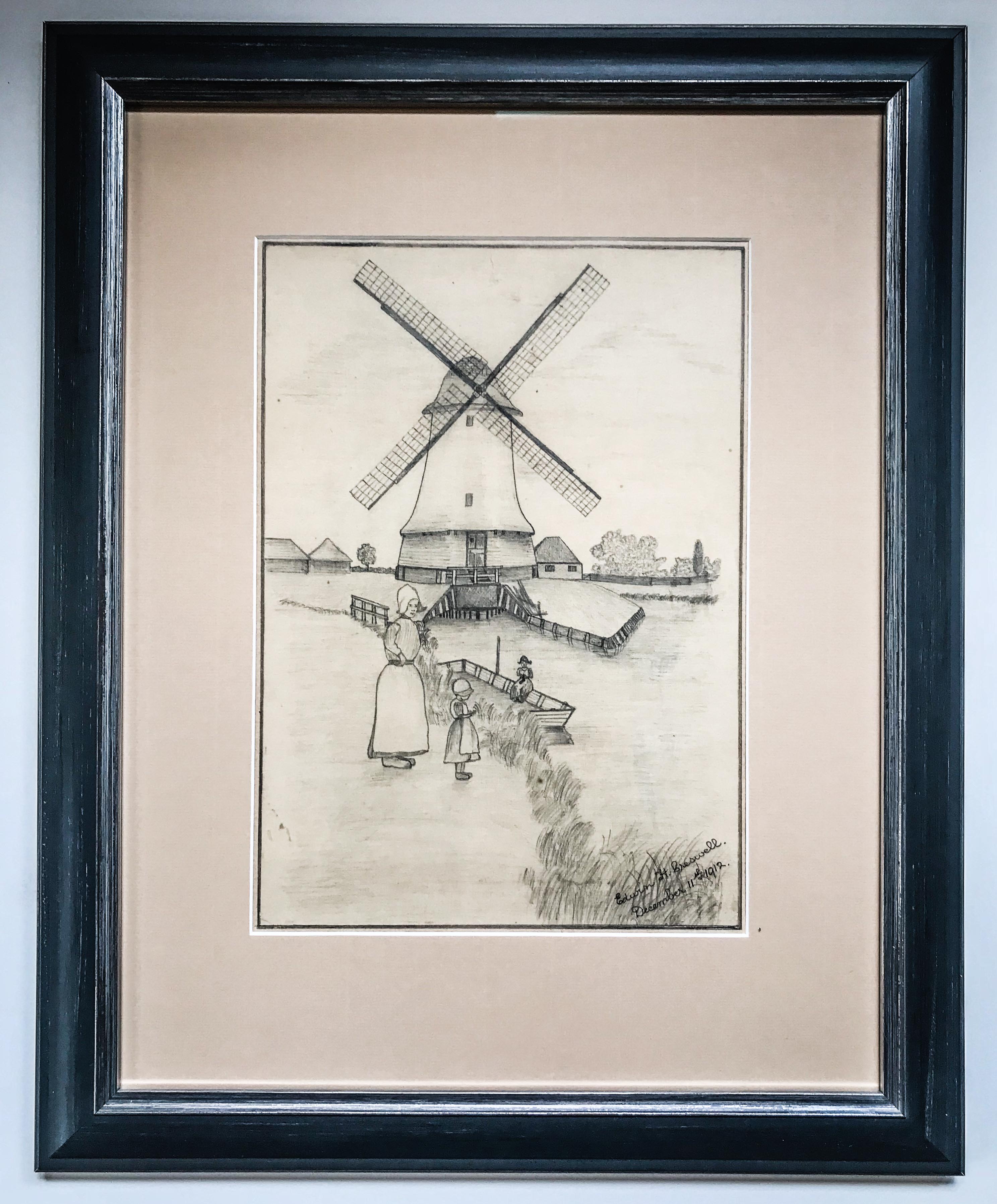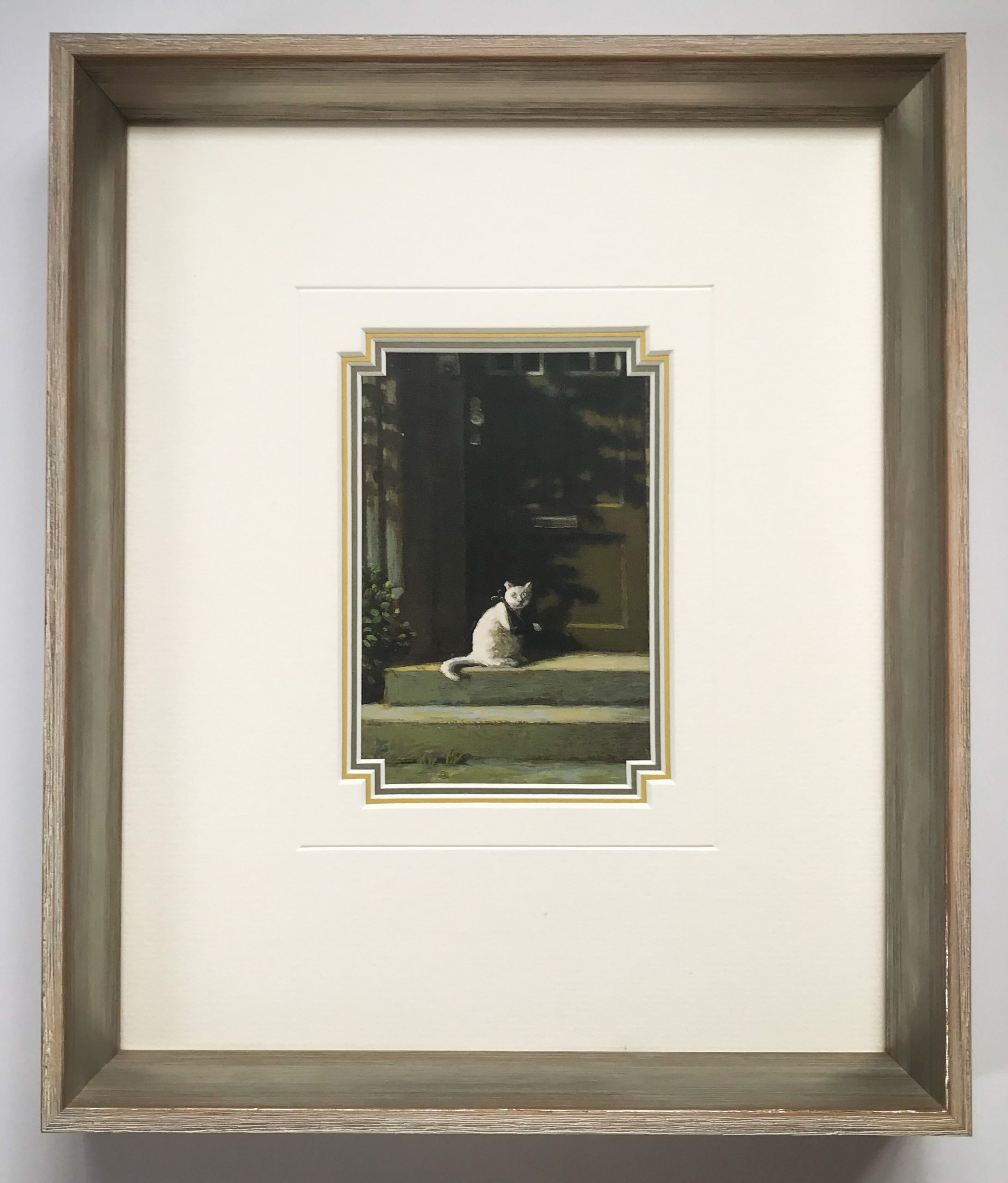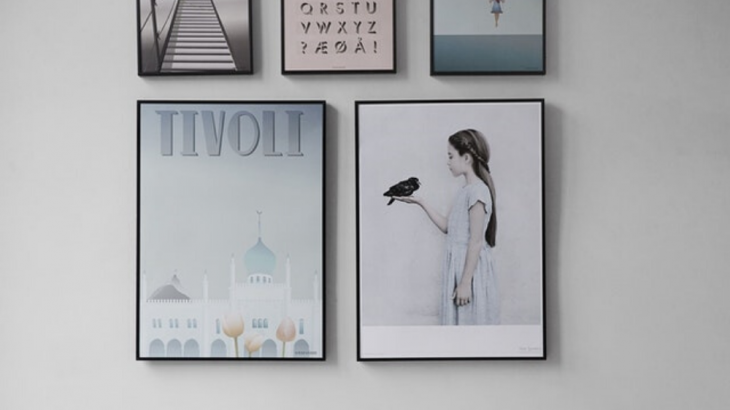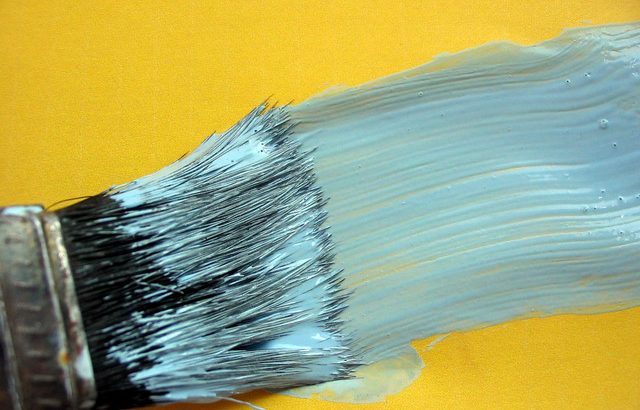We redecorate our homes regularly, as fashions and our tastes change, but why do we almost never get a favourite picture reframed? Maybe we should. Giving a much-loved work of art a fresh new look makes it stand out and be noticed once again. There are, in fact, lots of reasons why we should make a point of reframing our artwork – here are my top five.
- Damage or wear and tear
Time, ambient UV light and quality of materials used by some framers can all come to bear on a framed picture eventually and, once the frame and mount deteriorate, you run the risk of the artwork inside starting to be adversely affected too so it’s important to take a look at your pictures every so often to check they’re still in good condition.
Some of the most common problems are the presence of woodworm, damaged or worn frame corners. Anything with woodworm needs replacing as soon as you notice the problem as these insects can spread to other objects or structures within the home and cause a lot of damage.
Damaged or broken frames may be repairable, depending on the extent of the problem. A professional framer’s advice should be sought to see whether the frame can be clamped and re-glued. However, if the frame has been dropped, the damage may be too extensive, in which case it could be time to review the whole piece.


- On second thoughts…
Let’s face it, something we thought looked amazing 20 years ago might be showing its age in terms of style or you may even be moving your artwork around and find that a frame which looked great in one room is now clashing terribly with the décor. It’s amazing how much a new mount and frame can freshen up a painting. You’ll see the colours and details anew and it can completely change the feel of a piece of art if you change framing style. Try putting a more modern, simplistic frame on an old oil painting and see what a difference it makes.
- Something inside the frame is bugging you…
No, not the picture itself, instead what about those tiny black bugs that miraculously find their way inside your picture frame only to die where they are least wanted? These are thunder bugs – also called thrips – and despite only being about a millimetre long, can be really distracting if they lodge themselves somewhere on your picture. They often get inside frames which have not been sealed properly. If you look at shop-bought frames you’ll see they’re often just clipped into place. A Guild Certified Framer will always seal the back of a frame with tape to ensure no dirt, bugs or moisture can get in and ruin your picture.


- Something’s just not right….
If every time you look at a favourite piece of art, your eye is drawn away from it to something you can’t put your finger on, it could be that the mount the picture isn’t right. We often recognise subconsciously that something just doesn’t look right and it could be down to the mount being the wrong colour, or the wrong proportions for the piece of art it is meant to show off.
A strongly coloured mount can murder a delicate picture. Or the picture may have slipped slightly – this can happen if the wrong tapes have been used or if a picture is hung over a radiator or other heat source and the tapes dry out over time. Or, age may be taking its toll on a once-white mount. There are now ‘conservation’ mount boards available which will not discolour over time. If you do see this, it needs your attention because not only does it not look good, but a non-conservation mountboard contains acid which can actually damage the picture itself.
- Creating a brand, new piece of art
You might have a collection of framed items which have something in common. Things that show personal achievements, such as medals, sports shirts and pictures of events can look so much more impactful if framed together in a montage. If you’ve collected things over time and simply hung the pictures together in a group, why not think about reframing them into one themed grouping. This can make an amazing gift or keepsake for a family member and, by choosing a professional framer to do the work, you will be protecting the memorabilia against future wear and tear, fading or other damage by setting them safely inside a beautiful frame.

Hopefully, I’ve managed to get your creative juices flowing with the ideas above. Have some fun with your artwork – you look at it every day so it should make you stop and smile rather than frown and think “I really must get that picture sorted out”


